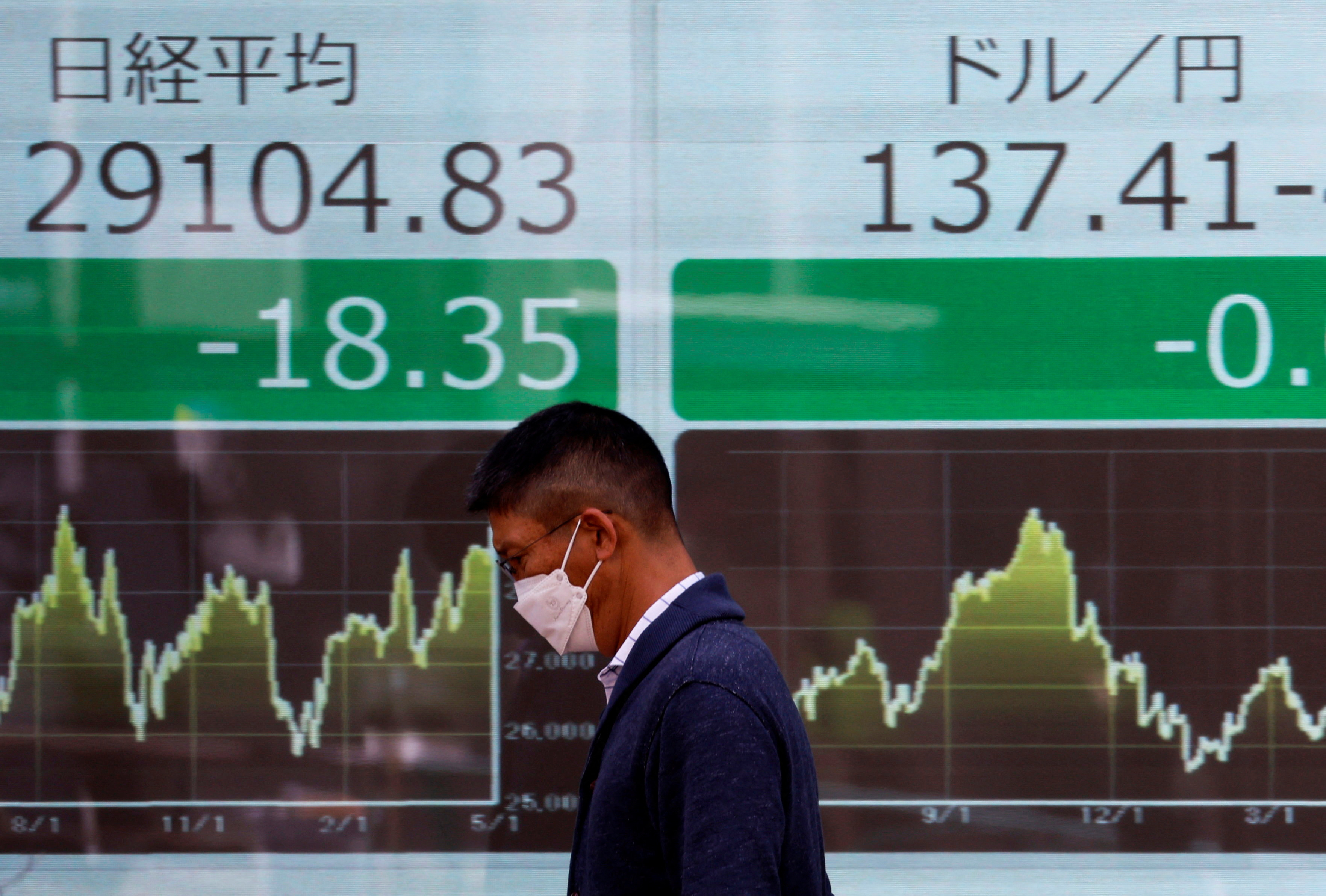
A man walks past an electric monitor displaying Nikkei share average and the Japanese yen exchange rate against the U.S. dollar outside a brokerage in Tokyo, Japan May 2, 2023. REUTERS/Issei Kato Acquire Licensing Rights
LONDON/SYDNEY, Aug 28 (Reuters) – World shares rallied on Monday after China announced measures to support its ailing markets, but Western markets remained cautious ahead of European and U.S. economic data expected later in the week due to determine central bankers’ next steps.
Beijing on Sunday announced it would halve the stamp duty on stock trading in the latest attempt to boost the struggling market and followed steps to support housing. China’s securities regulator also approved the launch of 37 retail funds.
World shares (.MIWD00000PUS) were up 0.3% in European trading. European stocks, led by technology shares and China-exposed automakers, also rose. The pan-European stock index (.STOXX) had climbed 0.6%. The FTSE was closed for a holiday.
The help was needed given profits at China’s industrial firms fell 6.7% in July from a year earlier, extending this year’s slump to a seventh month.
In addition, China Evergrande Group (3333.HK) lost as much as 80% of its market value on Monday after its shares resumed trading in a crucial step for the world’s most indebted property firm as it seeks to restructure its offshore debt.
Foreign investors continued to flee from Chinese stocks, offloading a net 8 billion yuan ($1.10 billion), according to data from the Hong Kong Stock Exchange.
The Chinese blue chip stock index (.CSI300) and the Shanghai Composite (.SSEC) closed higher.
“If everything was rosy there would be no need for a stimulus,” said Florian Ielpo, head of macro at Lombard Odier Investment Managers.
Unlike the bulk-sized packages announced in previous years, the latest measures represented a shift from the Chinese government to try and tactically lift market mood where it saw fit, said Ielpo.
The focus now moves to the official PMI for August, out on Thursday, which is still expected to show activity is in the red.
S&P 500 futures and Nasdaq futures edged up 0.2% and 0.3%, respectively, indicating the benchmark indices may extend last week’s modest rise.
The market did manage to weather a slightly hawkish outlook from Federal Reserve chair Jerome Powell, who reiterated they might have to raise rates again but promised to move “carefully”.
“The impression from the Fed has now become 50 shades of hawkish. We know rates will remain above 5% but the question remains for how long and how much higher?” said Lombard Odier’s Ielpo.
Futures imply around an 80% chance of no change at the Sept. 20 meeting, but a 58% probability of a hike by year end.
DOWNSIDE RISK ON JOBS
Much will depend on the flow of U.S. data, including this week’s ISM survey on manufacturing, along with reports on payrolls, core inflation and consumer spending.
Median forecasts are for payrolls to rise 170,000 in August with a steady jobless rate of 3.5%.
JPMorgan analysts cautioned that job gains could be depressed by the entertainment industry strike in Hollywood and are tipping an increase of just 125,000.
Figures on European Union inflation this week may also be instrumental in whether the European Central Bank (ECB) decides to hike next month.
The market is evenly split on whether there will be another rise in the 3.75% rate, with ECB President Christine Lagarde on Friday emphasising that policy needed to be restrictive.
This was a common theme among Western central banks, with Bank of England Deputy Governor Ben Broadbent saying at the weekend that rates might have to stay high “for some time yet.”
Odd man out, Bank of Japan Governor Kazuo Ueda, on Friday reiterated the need for policy to stay super loose.
That divergence kept the yen under pressure and early Monday the dollar was firm at 146.54 , within a whisker of Friday’s near 10-month top of 146.64. The euro was close to its highest since October last year at 158.27 yen .
The dollar slipped from its multi-week high to $104.16 against a basket of currencies.
Yields on U.S. two-year notes were largely flat after touching their highest since early July on Friday.
High yields and a relatively strong dollar have been a headwind for gold which was idling at $1,914 an ounce .
Oil prices drew some support from the storm developing in the Gulf of Mexico and China support.
Brent rose 20 cents to $84.68 a barrel, while U.S. crude rose 26 cents to $80.09 per barrel.
Reporting by Nell Mackenzie and Wayne Cole; Editing by Stephen Coates
: .


